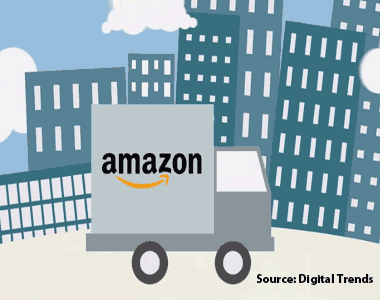| |
|
| |
|
 |
Supply
Chain by the Numbers |
| |
|
| |
- Nov. 9, 2023
|
| |
|
| |
|
| |
|
| |
Supply Chain Pressure at Record Lows; Amazon Top Global Logistics Company? Maersk with Big Layoffs as Rates Collapse; Nikola Motors Reacts to Fires in All-Battery Electric Trucks |
| |
| |
| s |
| ac |
| |
-1.74 |
|
That was the score of Global Supply Chain Pressure Index (GSCPI) for October from the Federal Reserve Bank of New York, as released last week. That puts it at its lowest level since the data’s starting point in late 1997, though the monthly GSCPI was just launched in mid-2022. The index is compiled from some 27 data points, with the aim of providing a comprehensive summary of the level of potential supply chain disruptions. The actual score is produced by calculating the number of standard deviations of the combined metrics from all the data sources from average normal times from the start of the data set in 1997. So the current index value means the level of cost, supply chain disruptions and other pressures are together 1.74 standard deviations less than the long-run average. The GSCPI soared starting in October of 2020, peaking at an all-time high of 4.21 in December 2021, but has steadily fallen from there. So these are relatively low stress times for supply chain and logistics professionals, the New Fed says.
|
|
|
|
| |
| |
|
|
 |
| That is how much third party logistics revenue Amazon generated in 2022, placing it atop the annual Transport Topics magazine’s list of the top 50 global logistics providers in the first year it was made eligible for the list. In fact, Amazon bumped out last year’s number 1, UPS, which dropped to second place with about $100 billion in sales. Amazon generates logistics revenue primarily from a couple of 3PL services. The first is Fulfilment by Amazon (FBA) which handles fulfillment (pick, pack and ship) for its Marketplace customers. Then there is Amazon Multi-Channel Fulfillment (MCF), which offers similar order fulfillment services for sales channels independent of Amazon. Keep in mind this revenue is only counted for Amazon’s third-party services. It does not include fulfillment and shipping costs for the millions of items Amazon stocks and resells on its own. The full list contains 14 companies that are primarily third-party logistics providers, along with 11 ocean carriers, 10 parcel delivery companies, nine freight rail providers and six trucking companies. |
|
|
|
| |
| |
100% |
|
That is the share of its electric trucks that OEM Nikola Motors for now will sell that are based on hydrogen fuel-cell technology, the company said in its Q3 earnings report last week. It is temporarily abandoning sales of its battery-only models. That after it saw recent battery fires in those style trucks, with a fire in June and second incident in August. Those incidents have for have now prompted Nikola to recall and stop selling its battery-electric big rigs. On Nov. 2, the company said the root cause extends beyond the one initial faulty component identified previously. Nikola said it will abandon the battery packs it was using in the trucks, which were supplied by Romeo Power, a company Nikola acquired in 2022. Nikola will replace all of the battery packs in sold battery trucks with “an alternative solution,” a process that will cost it $61.8 million. The company said it expected to resume deliveries of the battery-only in the first quarter of 2024. The release also said Nikola has 277 non-binding orders from 35 customers for the fuel cell-powered version of its semi truck, the Tre FCEV, which formally launched in late September. |
| |
| |
| |
| |
| |
|
|
|
| |
 |
 |
| |
 |
![]() |
 |
|
| |
 |
Feedback |
|
|
|
![]()
|
No Feedback on this article yet.
|
|
![]() |
|
|
|
![]() |
 |
![]() |
 |
|
| |